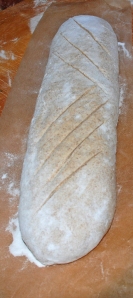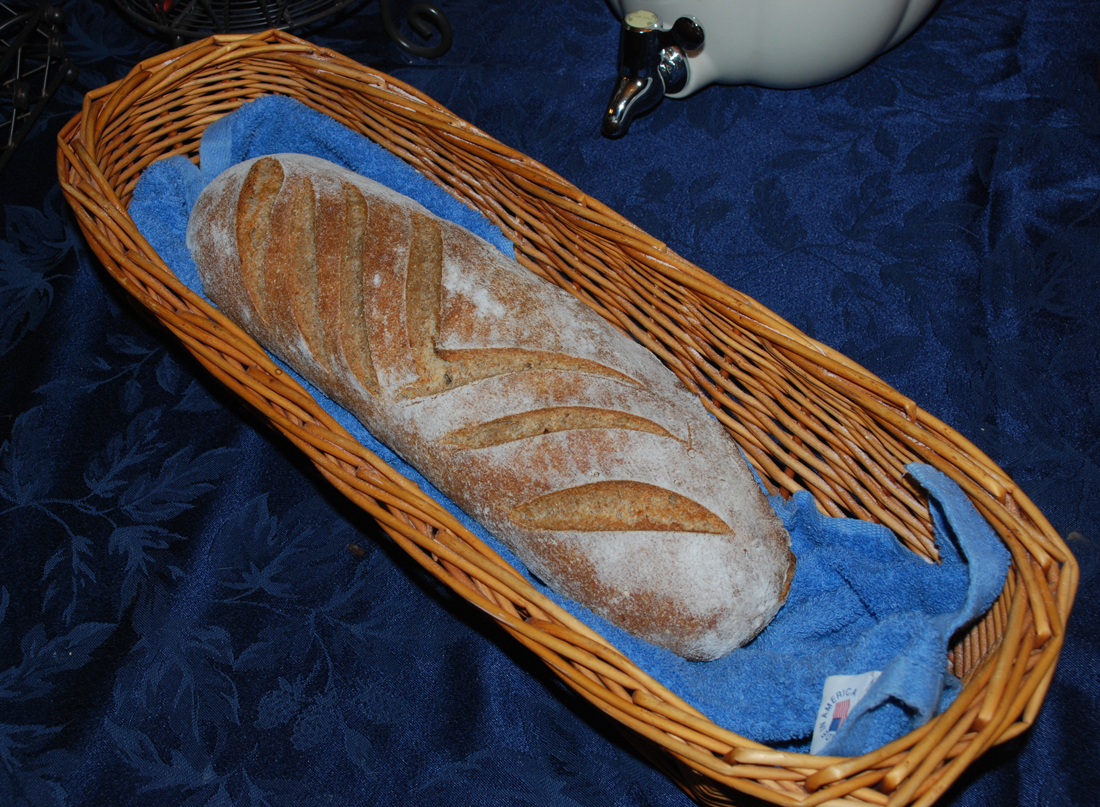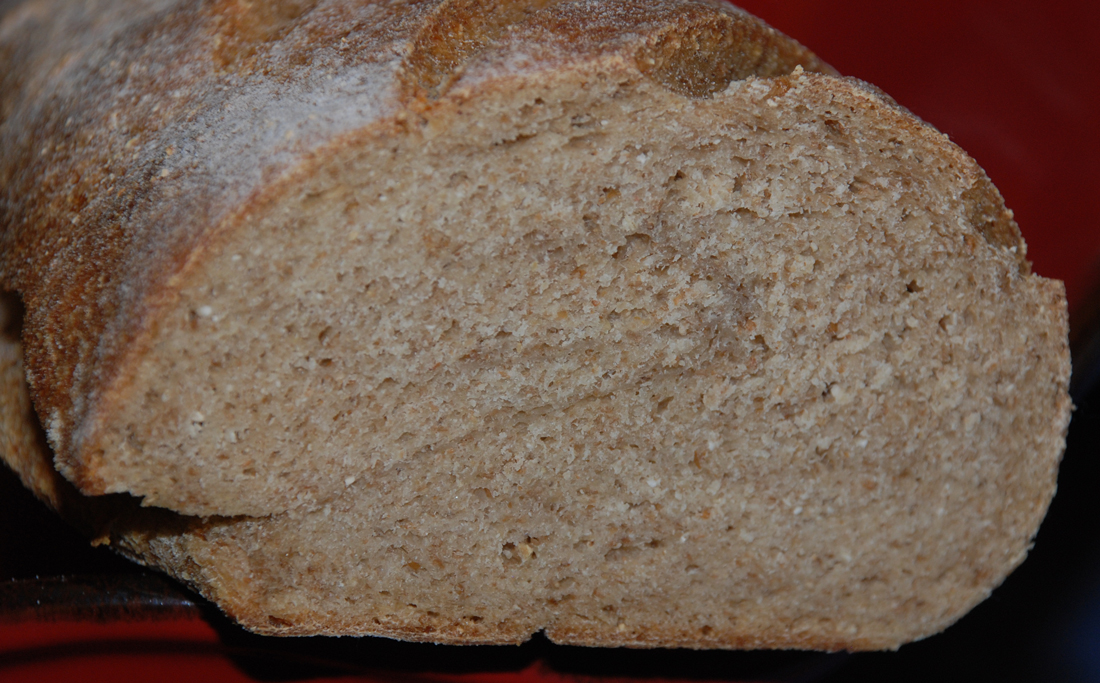 It's great to be back home from my 11 day trip to China for business. I couldn't wait to get home to my wife and my 5 kitty cats. We recently adopted another furball named Cleopatra and she has lived up to her name taking over the household like she's been with us forever.
It's great to be back home from my 11 day trip to China for business. I couldn't wait to get home to my wife and my 5 kitty cats. We recently adopted another furball named Cleopatra and she has lived up to her name taking over the household like she's been with us forever.
Anyway, I was chomping at the bit to bake some bread so after refreshing my starter I decided to make a simple sourdough Pain Au Levain, but of course I needed to add something different to the formula to make it a bit more interesting.
I had recently purchased some coconut flour from Whole Foods and decided to try adding some to this concoction and see what happens. I also added some wheat germ, Durum flour and pumpernickel flour along with bread flour. The levain starter was made with my standard 65% AP starter along with some whole wheat and bread flour. I also added some dried toasted onions which I rehydrated in the water used for the dough.
The resulting dough turned out very interesting with a nice nutty flavor but a bit dense. The coconut flour really soaks up the water and in hindsight I should have uppped the hydration level of this bread even though it is already 71%.
Starter (Levain)
71 Grams Seed Starter (65% AP Starter)
142 Grams Bread Flour
85 Grams Whole Wheat Flour
151 Grams Water (90 Degrees F.)
Final Dough
458 Grams Levain from Above
260 Grams Bread Flour
65 Grams Pumpernickel Flour
75 Grams Coconut Flour
25 Grams Durum Flour
35 Grams Toasted Wheat Germ
17 Grams Sea Salt
4 Grams Toasted Dried Onions
15 Grams Walnut Oil (You can substitute your oil of choice)
336 Grams Water, 90 degrees F. (Note: If you want a more open crumb I would increase the water another 15 - 20 grams)
Directions
Levain
Combine the ingredients for the Levain and mix by hand or in your mixer for 1-2 minutes. Place it in a covered glass or plastic bowl and let it sit for 9-10 hours at room temperature. If you are ready to bake you can use it immediately, otherwise you can refrigerate it for at least 1-2 days.
Final Dough
For the final dough, using your stand mixer or by hand, mix the water with the Levain to break it up.
Add the toasted onions to re-hydrate them in the water and then add the flours and oil and mix on the lowest speed for 2 minutes. Let rest for 15 minutes.
Now add the salt and mix for 4 minutes more on medium speed, adding more flour if necessary to produce a slightly sticky ball of dough.
Remove dough to your lightly floured work surface and knead for 1 minute and form into a ball.
Leave uncovered for 15 minutes.
Do a stretch and fold and form into a ball again and cover with a clean moist cloth or oiled plastic wrap.
After another 15 minutes do another stretch and fold and let it rest again for another 10 - 15 minutes. Do one last stretch and fold and then put it into a lightly oiled bowl that has enough room so the dough can double overnight.
Let the dough sit in your bowl for 2 hours at room temperature. It should only rise slightly at this point. After the 2 hours are up put in your refrigerator for at least 12 hours or up to 3 days.
When ready to bake the bread take your bowl out of the refrigerator and let it sit at room temperature for around 2 hours. After 2 hours shape the dough as desired being careful not to handle the dough too roughly so you don't de-gas it.
Place it in your bowl, banneton or shape into baguettes. I used my new banneton I found in a thrift store and made one large loaf.
Let it sit at room temperature for 2 hours covered with oiled plastic wrap or a moist cloth.
Pre-heat oven with baking stone (I use one on bottom and one on top shelf of my oven), to 500 degrees F.
Slash loaves as desired and place empty pan in bottom shelf of oven.

Pour 1 cup of boiling water into pan and place loaves into oven.
Lower oven to 450 Degrees and bake for 25 - 35 minutes until bread is golden brown and internal temperature reaches 200 degrees.
Shut the oven off and leave the bread inside with the door slightly open for 10 minutes. This will help dry the loaves out and keep the crust crunchy.
Let cool on cooling rack and enjoy!
Feel free to see some of my older posts at my other blog: www.mookielovesbread.wordpress.com

